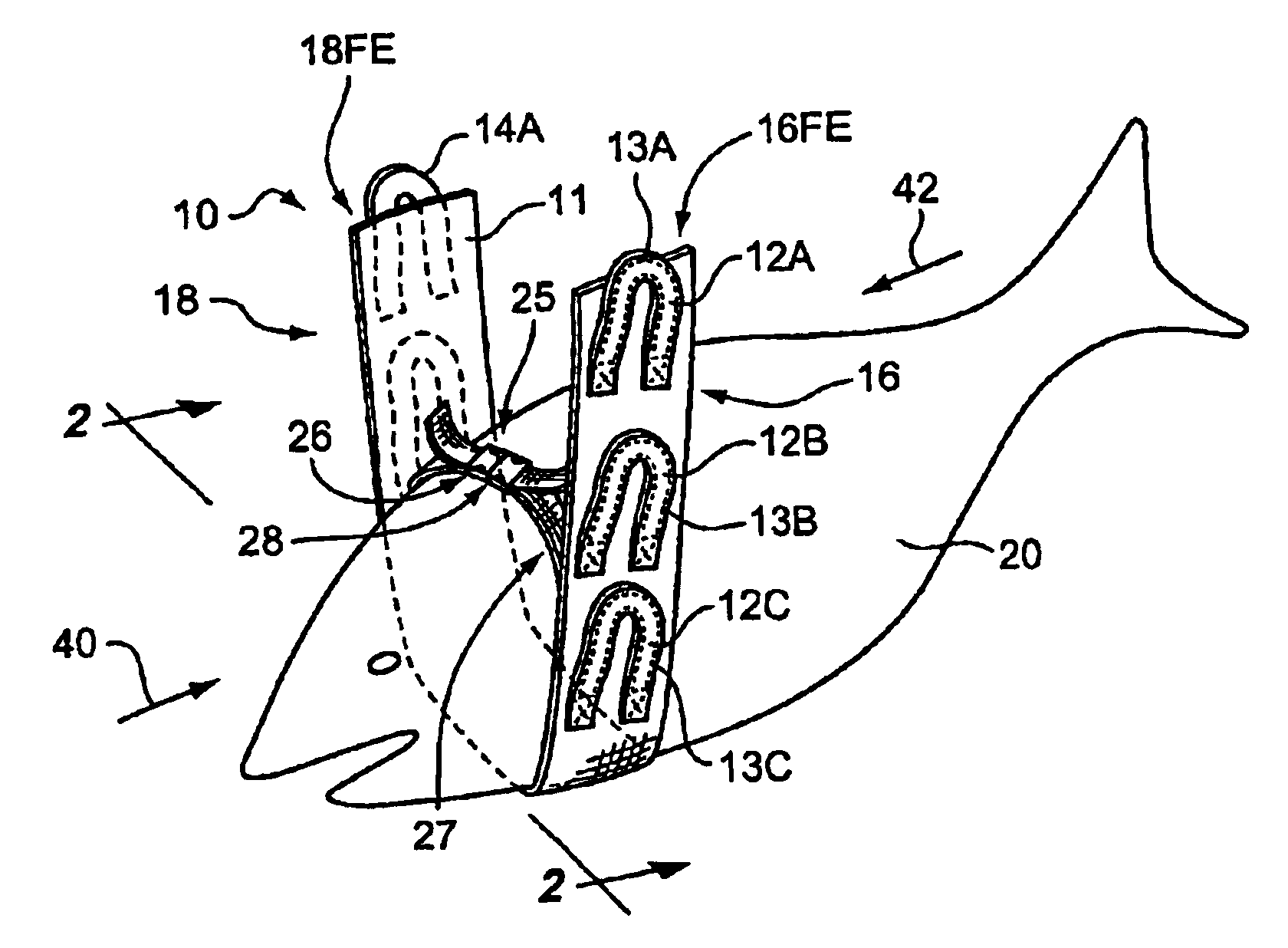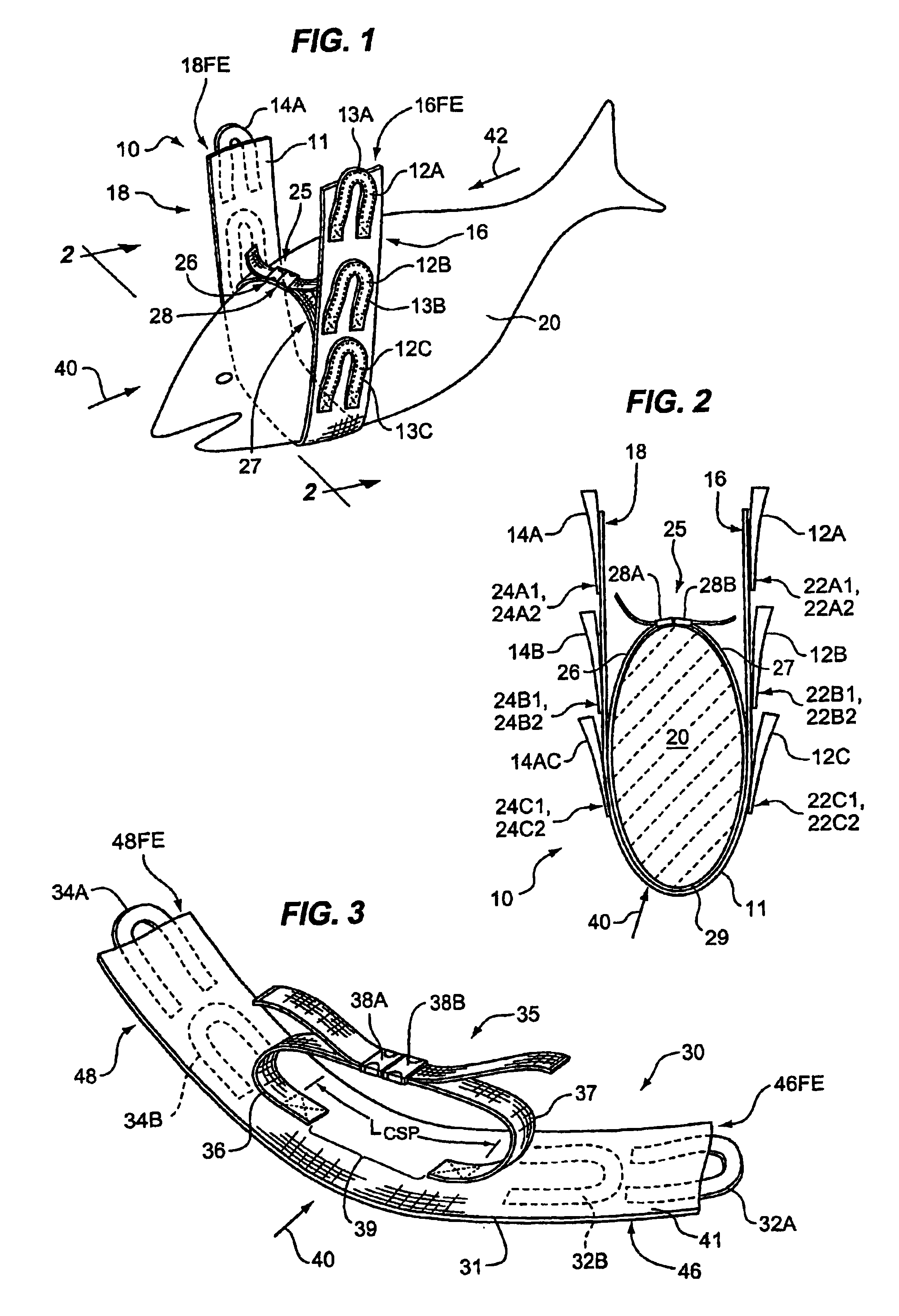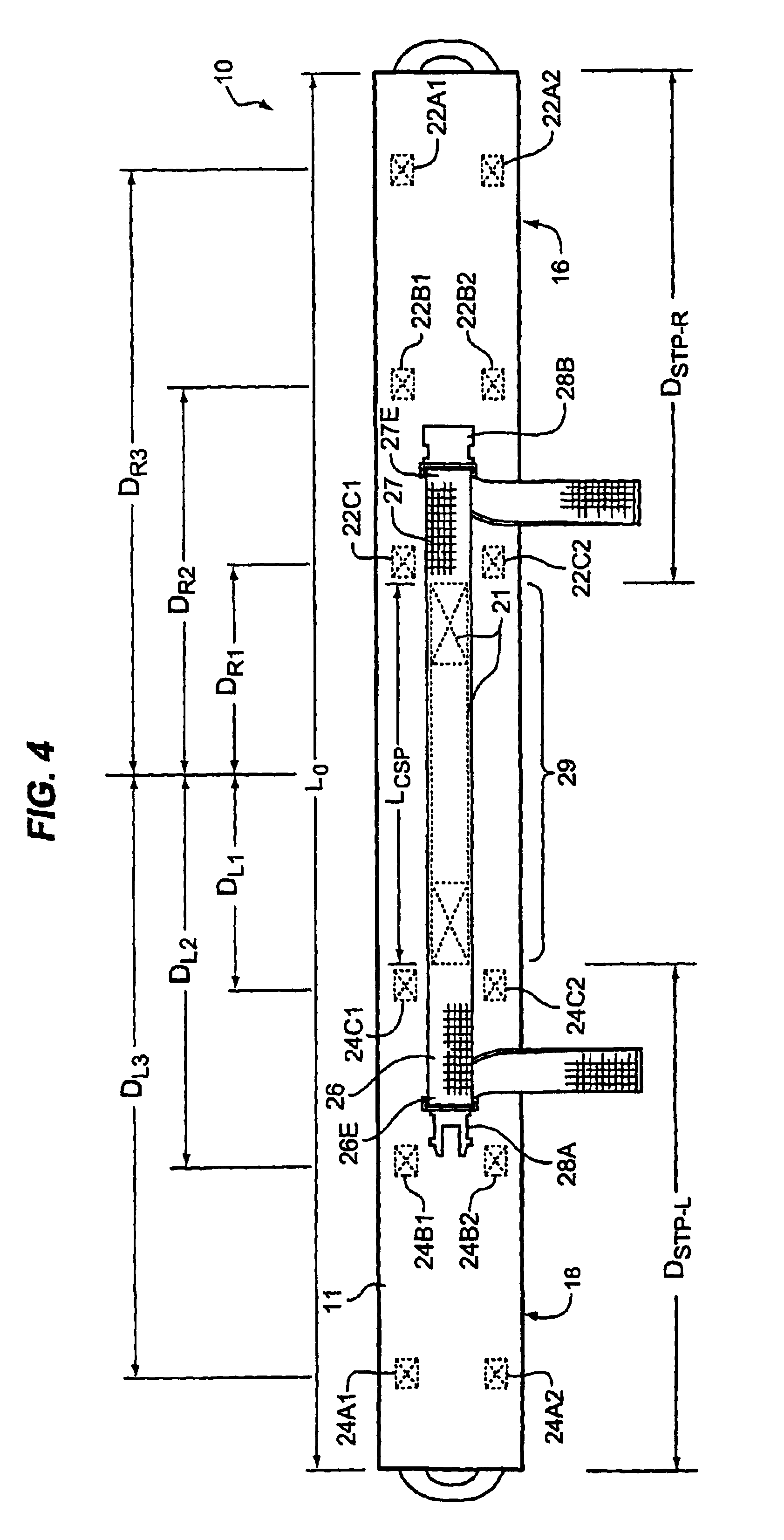Aid for lifting and carrying a mass/object
- Summary
- Abstract
- Description
- Claims
- Application Information
AI Technical Summary
Benefits of technology
Problems solved by technology
Method used
Image
Examples
Embodiment Construction
[0037]The device 10 of the invention in FIG. 1 is employed around a mass such as the identifiable fish-shape, outlined for reference only, at 20. One can appreciate the very many types of masses (from mammals to inanimate objects) on which device 10 can be used to aid in lifting and carrying. Mass 20 may be placed atop elongated support member 11, or the mass lifted and support member 11 placed under mass 20, from either of the directions labeled 40 and 42. Elongated support member 11 (see, also, details depicted in FIGS. 4 and 5) has two extensions identified and labeled 16, 18 on either side of a central-portion identified and labeled 15. At each end of extensions 16, 18 a respective free-end has been identified and labeled 16FE and 18FE for purposes of describing the features of device 10. Along extension 16, in a three-tiered hand-hold fashion, are handles 12A, 12B, 12C and along extension 18 one can see the top of handle 14A and another handle (not labeled, in phantom). Interpo...
PUM
 Login to View More
Login to View More Abstract
Description
Claims
Application Information
 Login to View More
Login to View More - R&D
- Intellectual Property
- Life Sciences
- Materials
- Tech Scout
- Unparalleled Data Quality
- Higher Quality Content
- 60% Fewer Hallucinations
Browse by: Latest US Patents, China's latest patents, Technical Efficacy Thesaurus, Application Domain, Technology Topic, Popular Technical Reports.
© 2025 PatSnap. All rights reserved.Legal|Privacy policy|Modern Slavery Act Transparency Statement|Sitemap|About US| Contact US: help@patsnap.com



